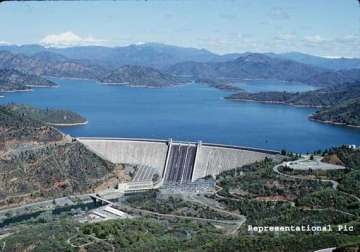Beijing: Defending its plans to build a series of hydropower projects over Brahmaputra river in Tibet, China today said it has taken “full account” of concerns of downstream countries as well as the “bigger picture” of good relationship with India while constructing the dams.
“On the exploration and utilisation of trans-boundary rivers, China has been adopting a responsible attitude and we ensure that exploration goes hand in hand with the protection,” Chinese Foreign Ministry spokesperson Hu Chunying told media here, responding to questions on yesterday's commissioning of the first phase of the largest hydropower station at Zangmu in Tibet.
The first generating unit of the 9.6 billion yuan (USD 1.5 billion) Zangmu Hydropower Station, which is positioned over 3,300 metres above sea level on the “roof of the world”, went into operation yesterday with five other generating units due for completion next year.
“We have taken full account of the concerns of the downstream areas,” she said, referring to apprehensions of India and Bangladesh which are the downstream countries of the Brahmaputra river.
China has three more such projects in the pipeline. “The hydropower stations China built will not affect the flood prevention and ecological system of the downstream areas. We have been in close communication and cooperation with them,” Hua said.
“The communication is sound. We bare in mind the bigger picture of China-India good relationship and we have been providing hydrological data and emergency management to the Indian side and has played important role in flood prevention and disaster relief in the downstream areas,” she said.
Citing the joint statement issued during the visit of Chinese President Xi Jinping to India in September, she said, the “Indian side thanked China for the provision of hydroilogical data and the assistance in emergency handling.”
“The facts have shown that our assistance in this areas are effective and channels are smooth,” she said. Referring to India-China agreement on the Trans-border Rivers signed in 2013 during the visit of then Prime Minister Manmohan Singh, Hua said since it was signed, the two sides are in communication on this issue.
“We are willing to use this mechanism to enhance our cooperation with India in Trans-boundary Rivers,” she said. Under that agreement, Chinese side agreed to provide more flood data of Brahmaputra river from May to October instead of June to October in the previous river water agreements in 2008 and 2010.
India has been expressing concerns over China's plans to construct more dams which New Delhi fears could restrict the flows of the Himalayan river, a lifeline to some of the country's remote, farm-dependent northeastern states. China for its part says its dams are run-of-the-river projects not designed to hold water.
Latest World News
